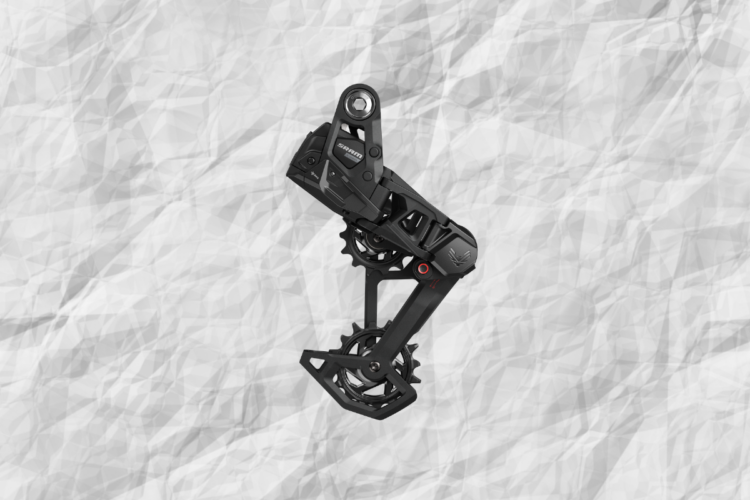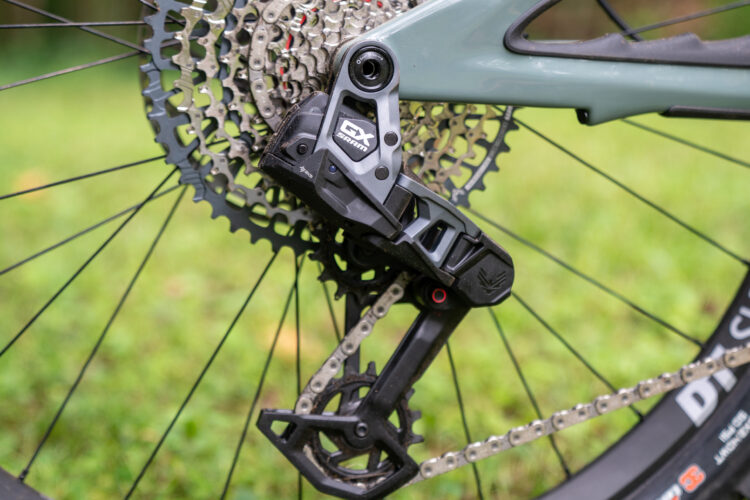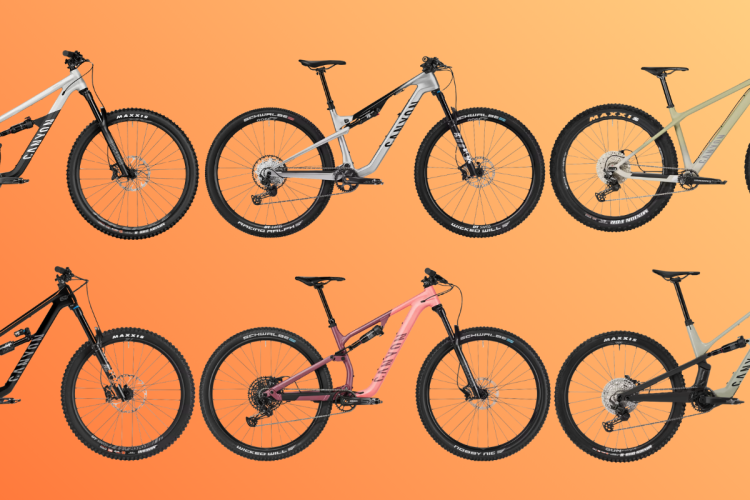
Time flies when you’re riding bikes. It’s hard to believe, but it’s been almost exactly a year since the SRAM GX Eagle Transmission electronic drivetrain was released. I received a sample a few weeks ahead of the launch last year, and I’ve been running it on my bike ever since. With over a year and countless miles of abuse, I thought it would be interesting to see how it’s held up given my largely positive early review. In addition to drawing on my own experience, I also chatted with Chris Mandell at SRAM and the mechanics at my local bike shop to answer some questions I had about the group.
Wear and tear
I hate to start with the boring stuff, but I imagine a lot of folks are wondering: How does SRAM GX Eagle Transmission hold up over time? In a nutshell, it holds up very well. I haven’t experienced any mechanical issues with missed shifts, broken derailleur parts, chain breaks, or the like. Just this week, a friend posted on our Discord group that he finally changed his T-type chain after 5,500 miles of riding, and even then it only measured 0.5 on this chain checker tool.
I’ve been using the derailleur and chain to chew through sticks and thick weeds on unmaintained trails, and the system never chokes. And despite more than a few rock strikes, the derailleur has proven itself to be rock solid.
Still, I was curious if I was just lucky to not have experienced any mechanical issues despite riding rough, overgrown trails and putting in serious miles on long and even overnight rides. Kinzer Hewitt of Loose Nuts Cycles in Atlanta told me he’s surprised the shop hasn’t really seen any Eagle Transmission repairs yet.
“A derailleur [is] something that gets beaten up on all the time. I call myself a [member] of the derailleur of the month club because I destroy derailleurs all the time. I mean, it is surprising to me that we haven’t seen much return,” he said. “We haven’t had anyone really come back and be like, ‘I’m having issues with this, this or this.'”

Re-installation
I first tested this GX Eagle Transmission group on a Yeti SB135 review bike before swapping the whole system over to my own Canyon Neuron trail bike. In doing so, I didn’t pay much attention to the derailleur mount bolt, figuring the X0 Transmission drivetrain on the Yeti used the same bolt as the GX Transmission drivetrain. Spoiler alert: they are not the same. Mandell of SRAM told me the bolt is one of the only pieces of the system that’s not interchangeable between Transmission groups.
I did manage to get the GX Transmission system working with the X0 bolt, but it required over torquing the thru axle, which is not recommended. Upon realizing my mistake, I replaced the bolt with the correct GX version and everything went together much more smoothly.

Firmware FTW
Whenever I hear the word “firmware,” I tend to tense up. Maybe it’s because I’ve been burned by bad updates in the past, or I’m just impatient, but I tend to avoid updating firmware unless it’s a last resort.
About six months into riding with SRAM GX Eagle Transmission, I got a warning saying the battery was low in my shifter pod. So, I replaced the battery with a freshie, but the app still said the battery was low. Figuring it was a bad battery, I tossed the coin cell and popped in another one. Even still, the app said my shifter battery was low.
So, I just rode. And rode. And rode. In fact, six months later I might still be on that same battery. I mentioned the issue to Mandell, and he asked if my firmware was up to date. Busted. As it turns out, I had missed like the last 14 updates. The SRAM app makes it easy to update the firmware when it’s time, but you do have to be near the bike to push the AXS button and let the system do its thing for a few minutes.
Following the shifter pod firmware update, the message cleared, and I could finally stop worrying that my shifter might ACTUALLY die on the next ride. (I carried a coin battery on every single ride just in case.)
In my initial review, I noted that “remembering to charge a battery” is one of the cons of electronic drivetrain systems like Transmission, and a reader called me out on this in the comments.
“Enough with the ‘battery fear’. Well, with SRAM anyway. Aside from checking the battery lights when I pull my two AXS bikes down, I carry a charged spare in my gear bag. It’s not that hard,” wrote SteveP2001.
They’re right. I don’t have any battery-related problems, or even inconveniences, to report. Honestly, a spare battery probably weighs about the same as the extra derailleur hanger that I used to carry all the time. Not only does the SRAM app provide low battery warnings, but my older Garmin Edge 530 does too, so I never forgot to charge the battery before it was too late.

Interoperability
A while back, I picked up a couple of no-name, spare AXS batteries on Amazon for cheap that would reportedly work with the Transmission derailleur. The batteries look legit, and they fit in another AXS system I was testing at the time. (Unfortunately I don’t recall if it was regular AXS, or if it was the X0 Transmission derailleur.)
However, I found the MAZZMASY knock offs don’t fit the GX Transmission derailleur. At least one Amazon reviewer confirms the same, and it’s not clear what is different about the GX Transmission derailleur that might prevent a good fit. My recommendation is to stick with the pricier SRAM branded batteries for now.

Bottom line
After more than a year of rough riding, I can confirm that the SRAM GX Eagle Transmission drivetrain system is both durable and reliable. With brand-new products there’s always a risk that the bugs haven’t been worked out, and in this case, perhaps they were with the pricier groups that launched ahead of GX. Still, many riders are understandably skeptical about such a new and different concept. David Stearman of Loose Nuts Cycles says he’s seen customers’ opinions evolve.
“Even going into electronic drivetrains, people are like ‘I don’t need that.’ But then you get on it, and you’re like, ‘well, alright, I kind of do,'” he said. “But then when you get on this, and it’s even that much more of a jump between the original AXS group, particularly because people are wrecking derailleurs, they’re wrecking chains by miss shifting. The timing on this doesn’t allow you to do that. And if you do, and you’re cranking on it too hard, it’s okay. So it saves people from themselves. And I think that’s going to be a big selling point for this group.”
- Price: $1,099
- Currently on sale for $879.99 at Bikes Online





















2 Comments
Jul 15, 2024
Jul 12, 2024